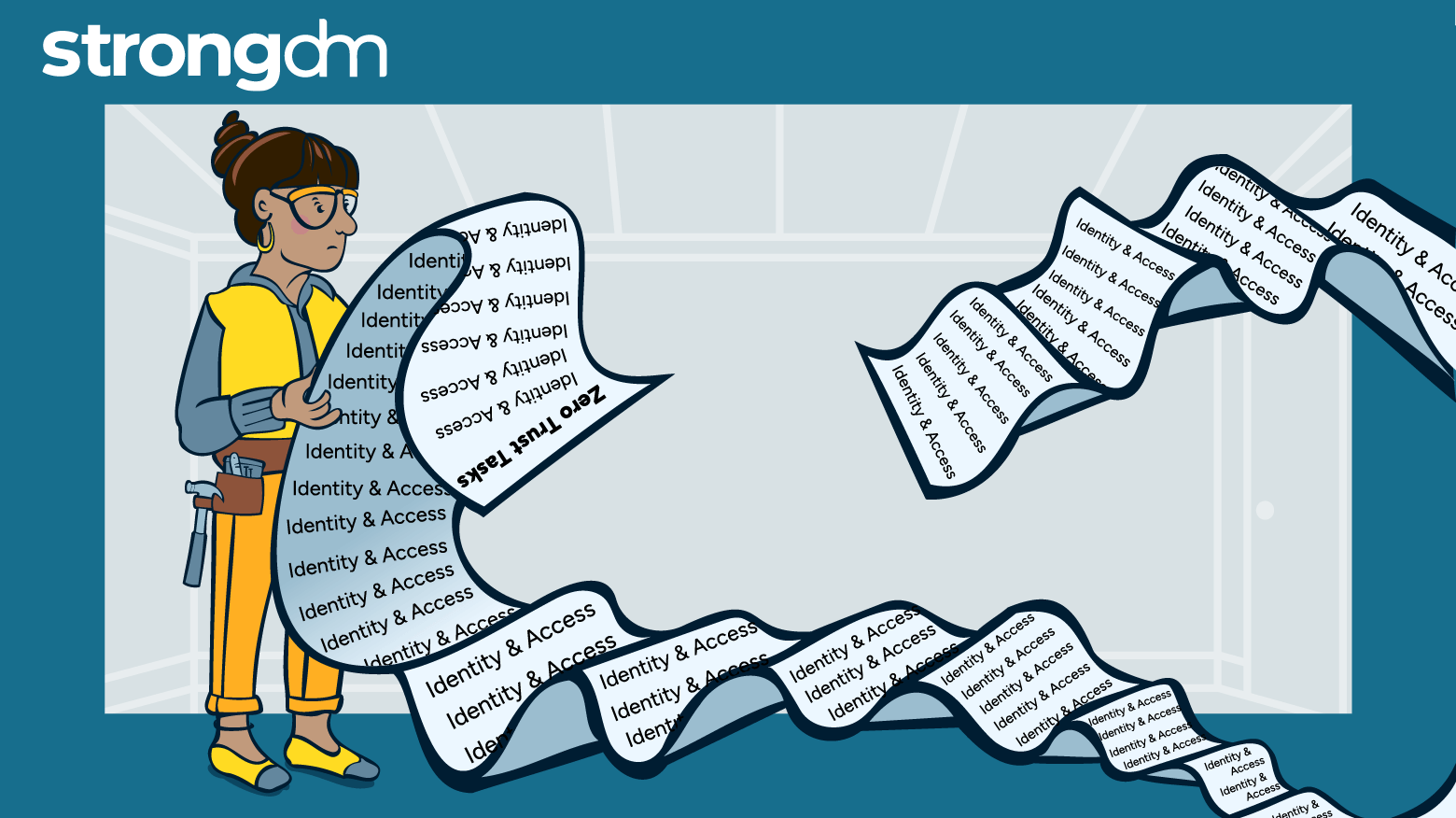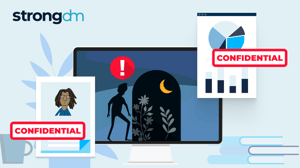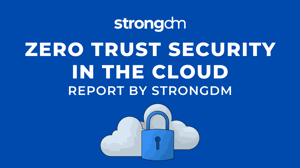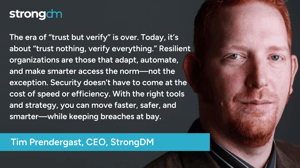Never Done: The Importance of Continuous Zero Trust Authorization


Written by
Fazila MalikLast updated on:
August 21, 2025Reading time:
Contents
Built for Security. Loved by Devs.
- Free Trial — No Credit Card Needed
- Full Access to All Features
- Trusted by the Fortune 100, early startups, and everyone in between
What’s the best part of a home improvement project? When it’s done.
Sure, sometimes it’s fun to putter around and slowly pick away at a project with no real deadline. But this isn’t about hanging vintage mirrored beer advertisements on the walls of the basement man cave. If the roof needs patching, you gotta get it done before the rain comes and it causes major damage.
Now, some of us are comfortable abiding by the edict that good is the enemy of getting it done. And in many cases, only nosy Aunt Phyllis is going to notice that the floorboards in the northeast corner of the laundry room don’t join correctly. The truth is that you got it done in a way that was satisfactory, so you earned the right to put your feet up and think highly of yourself.
The Perpetual Challenge: Authorization in IT Infrastructure
But we also know that home projects are never really done. Like death and taxes… and authorization. You know what this means if you are the caretaker of any part of your IT infrastructure. You recognize that there is no such thing as “identity done.” Otherwise, then your infrastructure would be rife with security issues and a playground for attackers.
Adherents to the Zero Trust security model, live according to a policy of “never trust, always verify.” It requires all devices and users to be authenticated, authorized, and regularly validated before being granted access, regardless of whether they are inside or outside an organization's network. But the catch is that authentication and authorization don’t just happen at the first touch.
Getting access is certainly dependent on the validation required by an organization’s security policies, but once access has been granted, any number of things can happen that put an organization at risk.
Challenges Beyond Initial Authorization
There’s a false sense of security that many organizations develop when they set up MFA or SSO authentication and then move on to other aspects of Zero Trust. Authorization only at the start of a session isn’t enough, and it can leave your infrastructure open to risks that occur after the initial authorization. A device could be compromised; a session can get hijacked by another user; a person could perform operations that should require additional approvals — the operating environment is vast and becomes a broad canvas upon which all different types of unwanted and risky actions could take place.
What if an attacker is impersonating a legitimate user? They can do serious damage to your data and systems. Think about what happens when a session doesn’t time out. That’s a lot of time for open access to systems and resources to exist. As time increases without additional validation, the canvas for risk broadens, even for legitimate users.
Trust is fragile and can be shattered unexpectedly. Therefore, your Zero Trust strategy should be adaptable, agile, and reactive to breaches in trust in real-time. That’s the burden lovingly handled by Continuous Authorization.
Adopting Continuous Zero Trust Authorization
Continuous Authorization is a comprehensive approach to effectively implementing Zero Trust. Zero Trust was never intended to be one and done in how it is applied. Zero Trust is like a parent who knows his child has a naughty streak. Trust is earned, constantly tested, and never permanent.
The ongoing validation of users' access rights
It works this way: Continuous Authorization guarantees the perpetual validation of users' access rights within a system. By leveraging real-time session monitoring and automated assessments through authorization policies, this concept facilitates the refinement of access in response to user behavior and contextual attributes. This dynamic approach strengthens cybersecurity by swiftly adapting to emerging threats that target users and identifying anomalous user activities in a timely manner.
By comparison, legacy security models often rely on static permissions and trust assumptions at the beginning of a user’s session. They operate as a gate, and while they may apply some level of rigor for initial access, their systems can rapidly become a veritable orgy of risk because they are doing nothing to ensure that validated users are adhering to established policies. But they also are not looking at behaviors that might run counter to the accepted usage of managed systems. These legacy solutions operate off assumptions that, once validated, all is going to operate according to plan.
But is your organization willing to risk critical enterprise data because you feel comfortable with the decisions made upon first touch?
The concept of Zero Trust emphasizes flexible access controls that consider various contextual signals, such as device security status, geography, desired operation, and even signals generated from the access-related activity. This ensures that access decisions are made based on a comprehensive understanding of the context surrounding each authentication attempt, enhancing the accuracy and relevance of security measures.
By making authorization a continuous process, security, compliance, and DevOps teams can fortify the infrastructure of their managed systems. This approach uses some essential elements to enhance all aspects of an organization's operations:
Distributed Policy Enforcement
Continuous Zero Trust Authorization enables policies to be managed centrally and enforced at the destination of access in real-time. This is particularly important in today's distributed and complex IT environments, where activities can take place across various systems, tools, and locations, AND in on-prem, cloud, and hybrid environments. The ability to enforce policies uniformly enhances the consistency, efficiency, and effectiveness of security measures.
Risk Mitigation
Dynamic and real-time monitoring of risks is a key component of Continuous Zero Trust Authorization. Identifying potential risks as they emerge and promptly enforcing policies in response helps organizations mitigate the impact of security incidents and proactively address vulnerabilities before they can be exploited.
Compliance Requirements
Regulatory frameworks and compliance standards like SOC 2, NIST 800-53, FedRamp, HIPAA, and all the other major frameworks mandate continuous monitoring and adaptive access controls to ensure data security. Continuous Zero Trust Authorization helps organizations meet these compliance requirements, reducing the risk of legal and financial consequences associated with data breaches.
A Changing Threat Landscape
Cyber threats, even the common attack types, don’t manifest in consistent behaviors. They are becoming more sophisticated and adaptive. To combat that, Continuous Zero Trust Authorization provides the most effective defense strategy because it stays ahead of emerging threats and minimizes the window of vulnerability that traditional security models might leave open.
The StrongDM Solution for Continuous Zero Trust Authorization
The StrongDM platform is built on the concept of Continuous Zero Trust Authorization, and we maintain the following:
- Comprehensive insight into the access and operations within your infrastructure, along with an understanding of the contextual factors surrounding them.
- Adaptable access controls capable of factoring in contextual signals for authorization decisions, be it devices, roles, attributes, or any other relevant considerations.
- Distributed policies can be instantly enforced at the point of access, regardless of the system, tool, or location where an activity is occurring.
- Dynamic and real-time monitoring of risks, coupled with immediate policy enforcement, in case an activity is identified as a potential risk.
We recognize the evolving requirements of contemporary organizations, where prioritizing security and access control is of utmost importance. Through the model of Continuous Zero Trust Authorization, we are advancing access control capabilities, providing you with unparalleled features to ensure that the right individuals have precisely the necessary access to safeguard your critical assets.
The StrongDM platform for Continuous Zero Trust Authorization is built on top of StrongDM's already robust capabilities, enhancing dynamic access to infrastructure and tools. This is achieved through the integration of a new policy engine, centralized policy management, and the capacity to incorporate virtually any contextual information into real-time policy enforcement. These components include the following:
Centralized Policy Management
The ideal scenario is crafting policies once and applying them universally. StrongDM gives users the ability to do this seamlessly by enhancing your current RBAC and ABAC policies with additional signals and controls. This centralized approach simplifies administration and eliminates the intricacies of access control. It capitalizes on the inherent strengths of these resources, fortifying them with additional layers of security policies to enhance existing controls and safeguards.
Through StrongDM, you can implement security measures consistently across all your varied applications and infrastructure elements.
Authorization (Attribute-based ) Models for Zero Trust
Flexibility and control are critical for security, compliance, and DevOps teams, so StrongDM supports a variety of authorization models, including *BAC (Anything-based Access Control), Role-Based Access Control (RBAC), Attribute-Based Access Control (ABAC), and Policy-Based Access Control (PBAC). You have the flexibility to choose the model or blend of models that work best for your infrastructure.
Signals Based on Context for Precise Control
Incorporating context-based signals such as geographical location, device information, IP address, requester data, or resource tags into access decisions offers supplementary insights into the requester, the accessed resource, and the overall environment. When combined with ongoing trust assessments, this capability empowers organizations to implement an adaptive security strategy capable of responding to real-time changes effectively.
Strong Policy Engine
The powerful Strong Policy Engine, driven by the Cedar Policy Language, facilitates the decentralized implementation of centralized policies, establishing a secure and cohesive access control framework throughout your infrastructure. This engine enables policy evaluation with response times in the sub-millisecond range, in line with the high-performance standards that users of StrongDM have grown accustomed to.
Device Context
An essential element in gauging the risk linked to access is the posture of the device. StrongDM’s Device Trust provides an additional layer of control to authorization decisions. This feature enables the integration of device posture data from security solutions such as CrowdStrike or SentinelOne into the ongoing trust assessment for authorizations. By factoring in the health and security status of devices, this enhancement fortifies your security protocols during the access-granting process.
Continuous Authorization is Not DIY
We trust that your home improvement projects will all be handled with care and quality, and we hope you most certainly enjoy that feeling of completion.
For those looking to secure their enterprise IT environments, we hope you know you have a partner in StrongDM. With Continuous Zero Trust Authorization, we can help you deliver real-time, continuous monitoring and automated assessments so you can stay ahead in the perpetual challenge of identifying and shutting down cyber threats.
Want to see StrongDM in action? Book a demo.
Next Steps
StrongDM unifies access management across databases, servers, clusters, and more—for IT, security, and DevOps teams.
- Learn how StrongDM works
- Book a personalized demo
- Start your free StrongDM trial

Categories:

About the Author
Fazila Malik, Sales Enablement Expert, as an accomplished Product Marketing Manager in the technology industry with over 5 years of experience, Fazila transitioned to a Sales Enablement leader position passionate about empowering go-to-market teams to excel in their roles. Throughout her career, she has worked with a range of technology products, including software applications and cloud-based solutions. Fazila is a member of the Product Marketing Alliance and an AWS Cloud Certified Practitioner. To contact Fazila, visit her on LinkedIn.
You May Also Like




